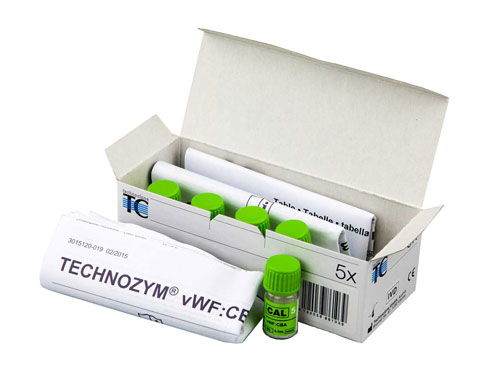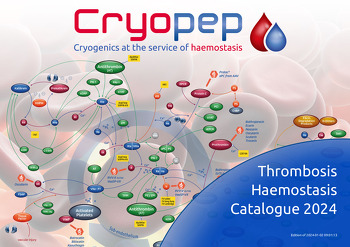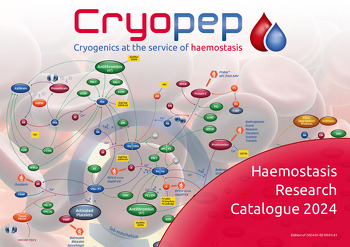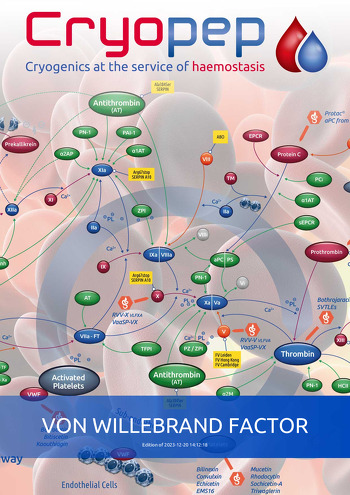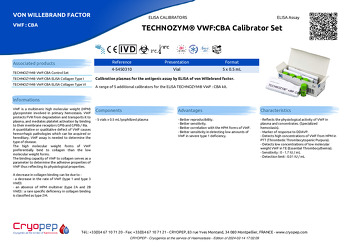VWF is a multimeric high molecular weight (HPM) glycoprotein involved in primary hemostasis. VWF protects FVIII from degradation and transports it to plasma, and mediates platelet activation by binding to their membrane receptors GPIb and GPIIb / IIIa.
A quantitative or qualitative defect of VWF causes hemorrhagic pathologies which can be acquired or hereditary. VWF assay is needed to determine the type of disease.
The high molecular weight forms of VWF preferentially bind to collagen than the low molecular weight forms.
The binding capacity of VWF to collagen serves as a parameter to determine the adhesive properties of VWF thus reflecting its physiological properties.
A decrease in collagen binding can be due to :
- a decrease in the rate of VWF (type 1 and type 3 VWD)
- an absence of HPM multimer (type 2A and 2B VWD) : a rare specific deficiency in collagen binding is classified as type 2M.
- Reflects the physiological activity of VWF in plasma and concentrates. (Specialized hemostasis).
- Marker of response to DDAVP.
- Detects high concentrations of VWF from HPM in PTT (Thrombotic Thrombocytopenic Purpura).
- Detects low concentrations of low molecular weight VWF in TE (Essential Thrombocythemia).
- Sensitivity : 0 - 1.7 IU / mL
- Detection limit : 0.01 IU / mL
- Better reproducibility.
- Better sensitivity.
- Better correlation with the HPM forms of VWF.
- Better sensitivity in detecting low amounts of VWF in severe type 1 deficiency.
- 5 vials x 0.5 mL lyophilized plasma









